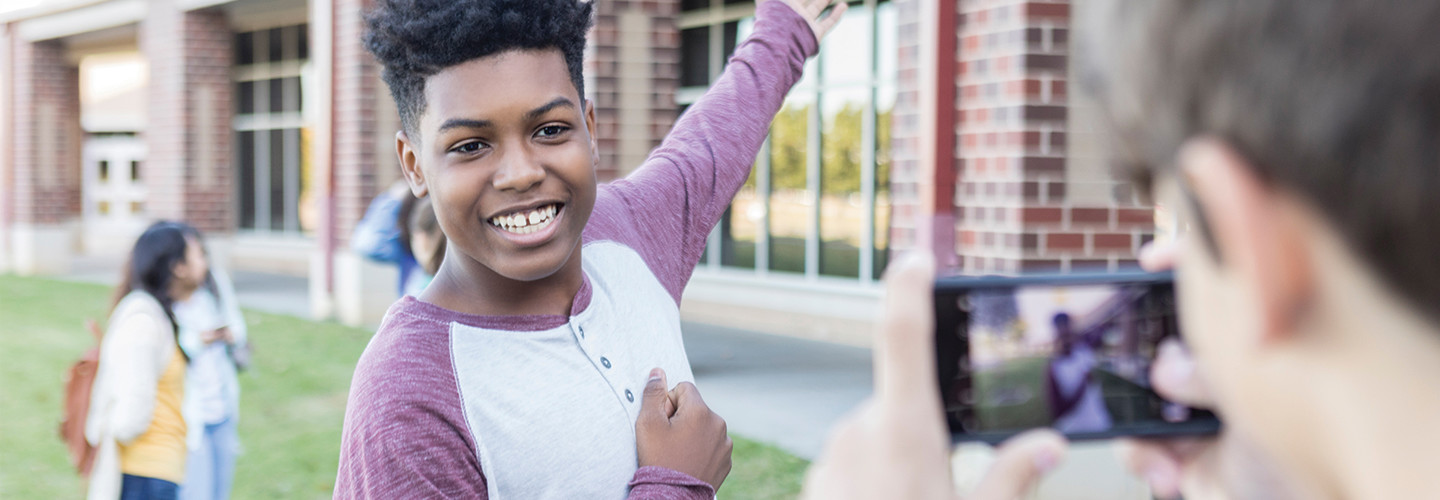Virtual Experiences Supports Learning and a Sense of Community
At Post University in Connecticut, administrators are leveraging a recently formed esports club to help deliver an authentic campus experience.
“Normally, on homecoming weekend, we would have sports on our athletic field. This year we presented virtual matches of Rocket League and Super Smash Bros., with our students competing against other schools,” says Provost Elizabeth Johnson.
For students watching the action virtually, “it created an opportunity for them to cheer on the Post Eagles — just in a different way,” she says.
Other colleges are hosting virtual parties and other social gatherings. Gettysburg College, for instance, is offering socially distanced movie nights via Panasonic projectors.
“It’s been great to use technology to not only support student learning, but also give them the sense of community they so often look for when coming to campus,” says Vice President of IT Rodney Tosten.
Data Analytics Help Colleges Maintain Social Distancing
Extracurriculars are just part of the picture. Students also need an authentic classroom experience, despite the constraints of COVID-19 — and here, too, technology can help.
The Ohio State University and Yale University are using collaboration hardware from Lifesize, whose Kaptivo whiteboard and camera systems help professors connect with students in large, socially distanced learning spaces.
“If you are in a large lecture hall, somebody has to sit at the back whether they want to or not, because they are social distancing, and the visibility of the whiteboard is not so good for those at the back,” says David Hsieh, general manager of advanced collaboration at Lifesize. With the right tools, “you can digitize the whiteboard and show it on monitors at the rear of the auditorium.”
Such capabilities can also support blended learning, allowing instructors to broadcast whiteboard content to students at home or in their residence halls.
For students to take part in technology-supported learning, they first need to feel safe on campus. Although some colleges have deployed fever detection and contact tracing measures, others are relying on data analytics to enforce social distancing and to provide a sense of reassurance.
Dominican University in Illinois uses the Tableau data analytics platform to track local COVID-19 cases and drive awareness among students coming to campus from areas where the numbers are high.
“We are a highly commuter campus, and we want to see if we have students coming from hot zones, so we map positive cases to look for trends,” says Jill Albin-Hill, vice president for technology and operations.
“We send these students in the COVID hot zones additional resources: testing sites, clinics, medical health centers that are in their local ZIP code,” she says.
Students use an app to report themselves symptom-free before coming to campus, and those arriving get their temperatures checked. “These layers of mitigation give people the confidence that they are relatively safe in being here,” says Albin-Hill.
Analytics also facilitate a safer on-campus experience by giving administrators powerful tools to support their social distancing protocols.
With analytics, says Collette, “you can see, for example, the Wi-Fi usage data in a given location, or what the foot traffic is in certain parts of the university. You can use that to make decisions about scheduling or about the deployment of campus security. The dashboards and the visualization can lead to better policy decisions and more effective use of the physical space.”
At data analytics provider Degree Analytics, Chairman David Palumbo says such capabilities can be key to supporting campus normalcy. “You can take that network traffic and create a map of the campus to show where people are congregating, to show them the most efficient pathway from point A to point B,” he says.
Data related to network activity makes it possible to track the number of people in a library, computer lab or other space, says Palumbo.
“You can report that data to the campus security officer, but a better approach is to communicate it to the students themselves,” he says. “If you give students the data to understand the density and the distancing, then they have the opportunity to behave correctly.”
RELATED: Add Value to Online Instruction and Redefine Student Success
Virtual Tours Help Colleges Boost Enrollment Amid COVID-19
With campus tours largely suspended, colleges also are looking to technology to support ongoing recruitment. Although many institutions turn to production companies such as YouVisit to create content for virtual tours, others produce their own self-paced, virtual reality experiences for prospective students.
North Carolina’s Fayetteville Technical Community College recently hosted a virtual open house, along with a virtual college tour and admissions session. Studio equipment included Hitachi 3MOS HDTV studio cameras, Sennheiser microphones and an AJA Ki Pro Recorder. Field production teams made use of Sony HD XDCAM XAVC cameras and a DJI Mavic Pro 2 drone.
Post University also offers a self-guided virtual campus tour, augmented by live admissions counselors. Within the virtual tour, “you can turn around, you can navigate, you can jump off into various spots on the tour, get information about any of the buildings,” says Chief Information and Technology Officer Greg Theisen.
“Our admissions staff use an iPad device and FaceTime to walk you around, so you can drill into that campus experience along with someone from our admissions team,” he says. “The idea is to use the technology to drive that human engagement.”
With data, too, the end goal is to motivate engagement.
“It’s not just about IT people using data to determine network uptime,” says Splunk’s Chief Technical Advisor Juliana Vida. “It’s about university leaders knowing where to deploy public safety resources and being able to give students choices.”
Going forward, choice will likely be a key driver of the higher education experience.
“For almost every classroom experience, there will be multiple channels: a physical channel, a Zoom call or an asynchronous channel through the learning management system,” Palumbo says. “As a student with multiple channels available to me, I want to know: When should I go live and when should I stream? Schools can use the data they already have to enhance the overall educational experience.”










